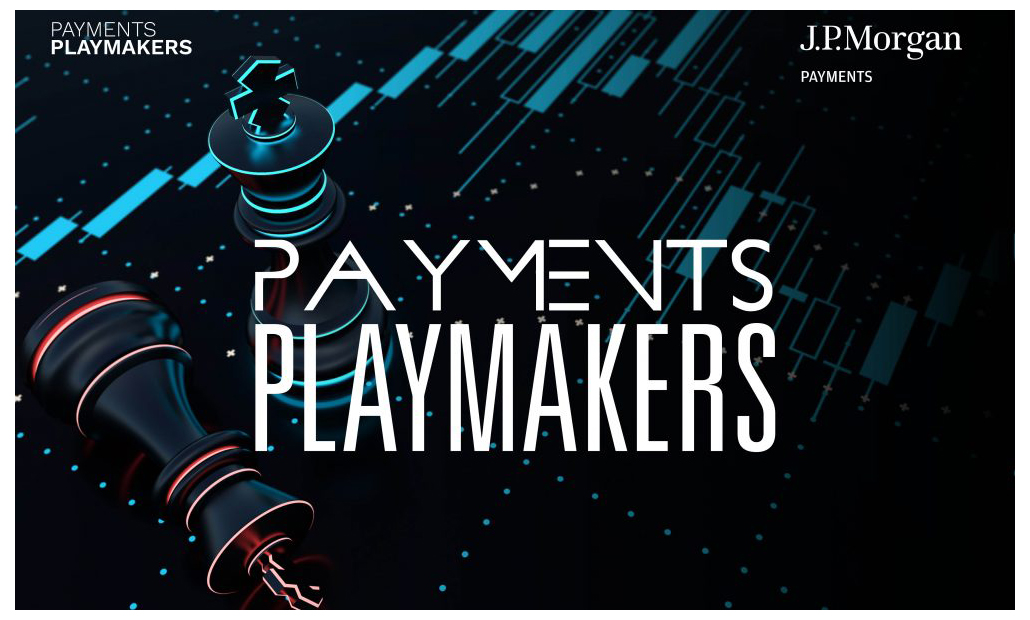Adobe and J.P. Morgan Payments: Why Payments in 2023 Is More Like 3D Chess Than Checkers
“Every single payment matters. That statement seems simple — it’s always been true, but it’s more critical today than it’s ever been.”
Adit Gadgil, global co-head of eCommerce and Technology, Media and Telecommunications at J.P. Morgan Payments, made that observation in a recent panel discussion with Karen Webster, joined by Matt Wegner, vice president of Global Payments and Risk at Adobe.
Platforms are embedding payments, and media firms and telecoms are embracing contextual and contactless financial transactions that can be done anytime, anywhere through connected devices.
If enabling payments 25 years ago was akin to playing checkers — getting the cards lined up, taking account information, getting funds sent and received — now it’s a game of chess, Wegner said, with the emergence of the FedNow® Service, digital wallets, and the movement to maximize success rates while diminishing the impact of fraud.
The forward-looking merchants and providers are the ones that see around corners, crafting new payments strategies and commerce opportunities for the near and long term.
But the digital channels through which we do business make switching costs easy if payments are not guaranteed to work in the here and now.
If checkout is full of friction, or payment systems are down and recurring payments don’t recur, consumers simply will vote with their feet. They’ll move on and consider a different partner or a competitor.
The “blast impact” of a less-than-optimal payments experience then can be devastating.
“In the online world,” Wegner said, “you don’t get a second chance. It’s one and done.” The enterprises that don’t have the right solutions in place risk losing revenue every single time a customer is dissatisfied.
That’s why they need banks and service providers, said Gadgil and Wegner, to act as “payments playmakers,” to ensure that everything is running smoothly in the background. They’re not the star athletes of commerce, necessarily, with the newest consumer-facing offerings.
They’re more like the referees and the umpires, making sure good transactions get through and there are standards of service so that the eCommerce experience is always on and always up to expectations.
Changing Expectations
As for those expectations themselves, Wegner — with decades of experience stretching across a long tenure in the platform economy at PayPal, eBay, Uber, and now, Adobe — said that there are a few universals in place.
Everyone is moving toward a one-click experience and invisible payments, where Uber helped set some of those expectations.
“Every company is becoming more like a FinTech,” said Wegner, who added that Adobe’s world is populated with content creators and influencers on social media, seeking to monetize their offerings and passions, “and when you get into the middle of the money flow, you start to look like a bank.” Payments are not just about processing transactions, they’re also about holding funds and disbursing them.
Adobe, of course, didn’t start out as an eCommerce player, Wegner noted, adding that the company’s tech stack was originally designed to ship boxes of software to Barnes & Noble and computer shops and evolved over decades to take on eCommerce functions to move billions of dollars around the world.
Now, the payment services for Adobe Commerce and Magento Open Source enable client firms to manage payments and order data across their digital storefronts. With robust data flows, he said, it’s possible to verify and score transactions so that end users need not input their data several times, especially with recurring payments.
“We might not ask for address information,” more than once, he said, “or have to do a ZIP code validation … we smartly serve up things that they’ve already provided, or give them the last four digits of their credit card number and have them approve that as the payment method.”
The data and the verification that take place behind the scenes, Wegner said, help banks accept transactions without frictions or declines in the mix.
Partnership Model
Delivering those friction-free experiences at scale, Gadgil said, requires that enterprises and platforms partner with providers to tackle the administration that’s required around payments — from collecting card details to enabling refunds to getting fund flows to work across borders.
It’s impossible to tackle all the nuances, Wegner and Gadgil agreed, as know your customer (KYC) and regulations governing payments — not to mention the technologies themselves — can change with alarming speed. No one firm can go it alone or tackle it all.
Embedding payments, Gadgil said, with a nod toward J.P. Morgan Payments’ own efforts with enterprise clients, including Adobe, “means co-creating solutions that are bespoke in nature and that solve specific problems. In some cases, this involves taking a look at someone’s payment stack and saying, ‘These assets are ones you build and you manage, but here’s a bunch of assets that actually we will manage on your behalf and we will maintain.’”
Those partnerships, Wegner pointed out, enable companies, Adobe among them, to pave a path toward instant payments, as content creators can be paid just as soon as money crosses the platform itself.
Gadgil noted to Webster that the value of partnering with banks goes far beyond the mechanics of the payments themselves. There are also the benefits of leaning on those banks’ treasury services to manage idle cash. In one example, Wegner added that the data-driven insights gleaned across the Adobe platform might help springboard into lending against free cash flow.
“There are a whole bunch of things that companies can look at together,” Wegner said, “where we create a whole new stream of value for shared customers that we have. And because of that, everybody wins.”
See more in the Payments Playmakers series:
How Mondelez Uses Data to Turn Consumers Into Lifelong Customers
J.P. Morgan Payments and Sephora Talk Tap-to-Pay and the Endless Aisles of Omnichannel Commerce
